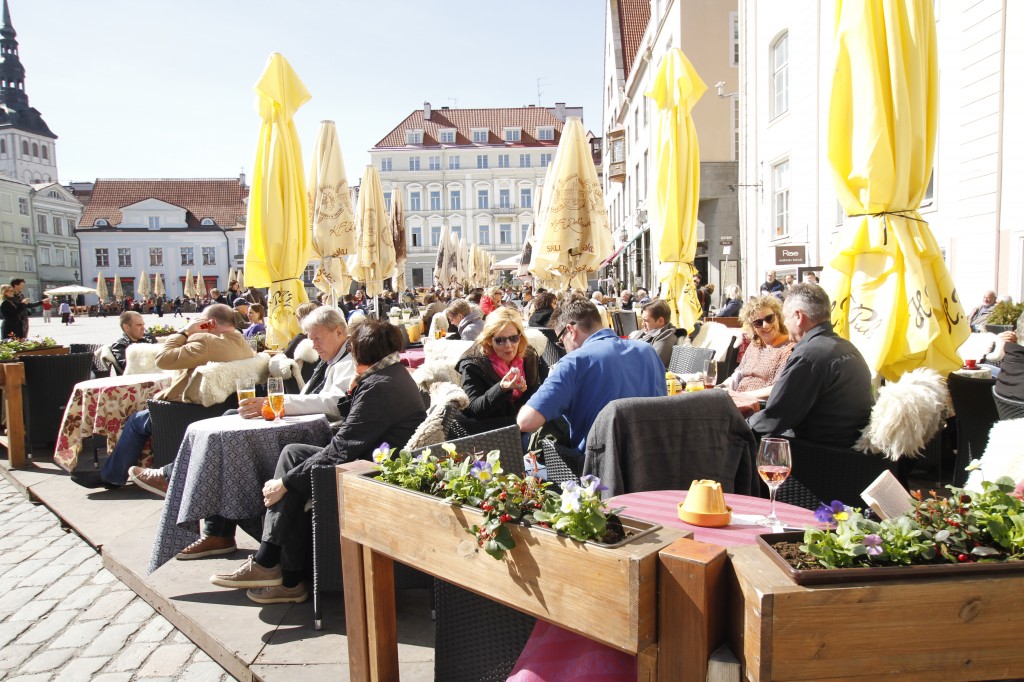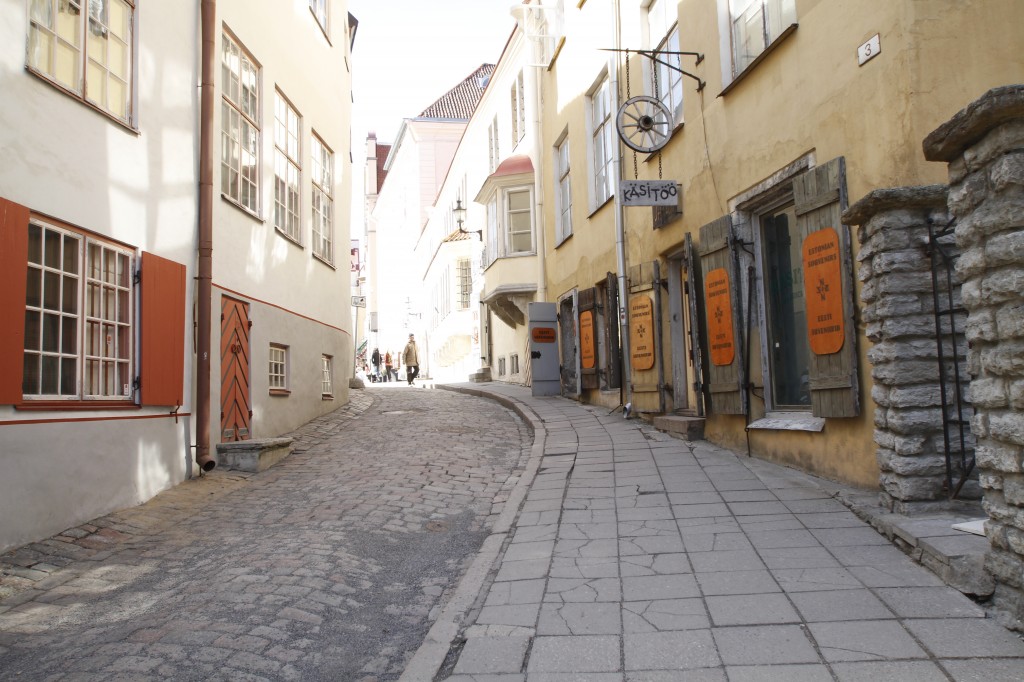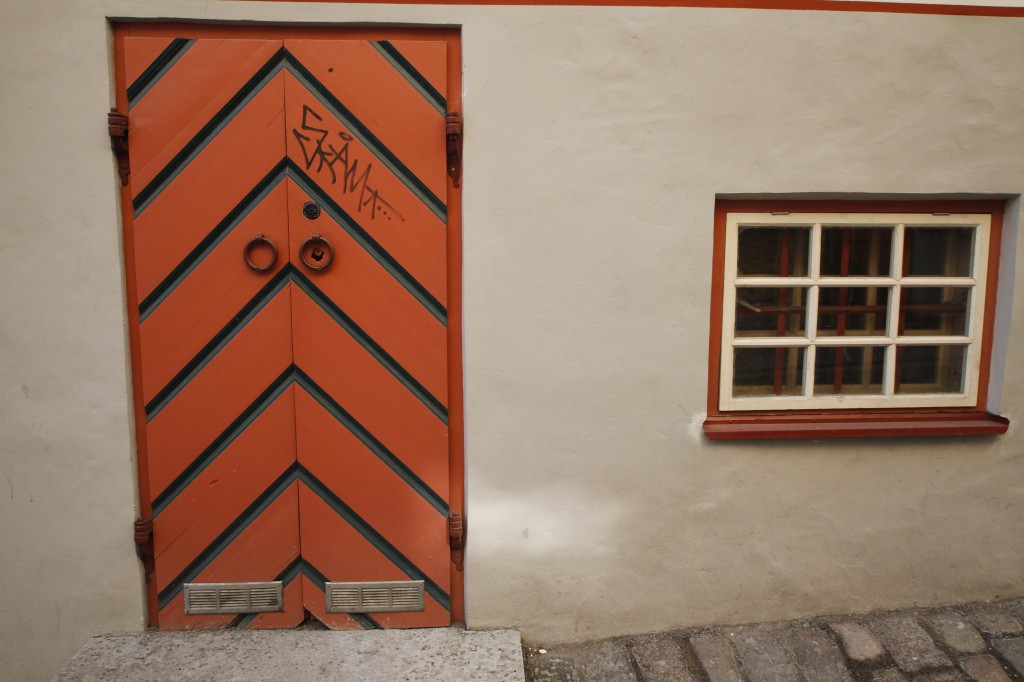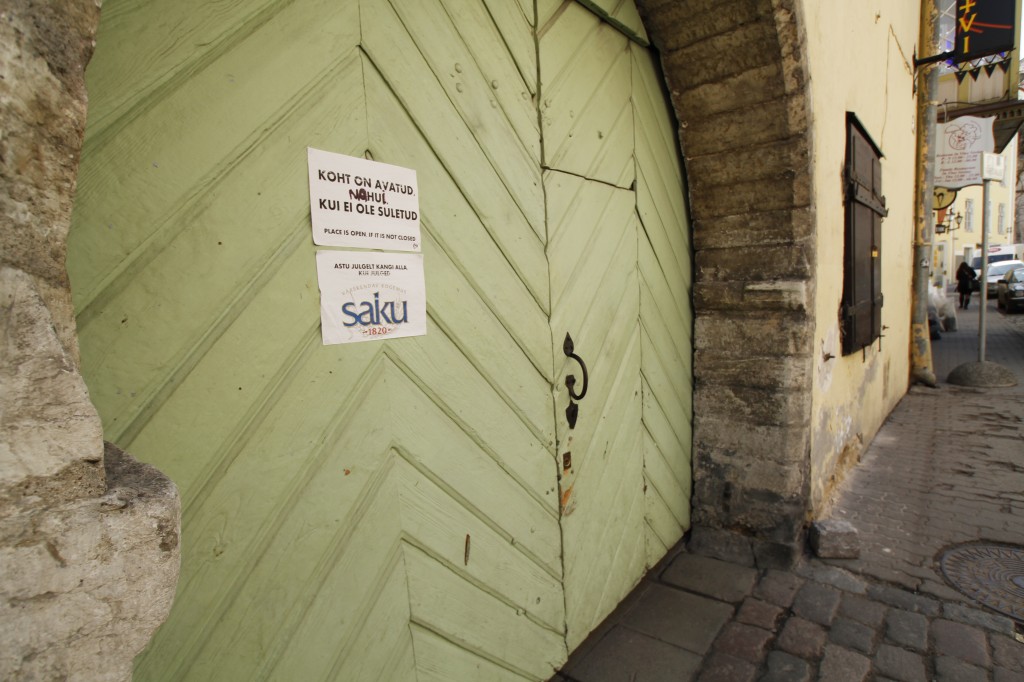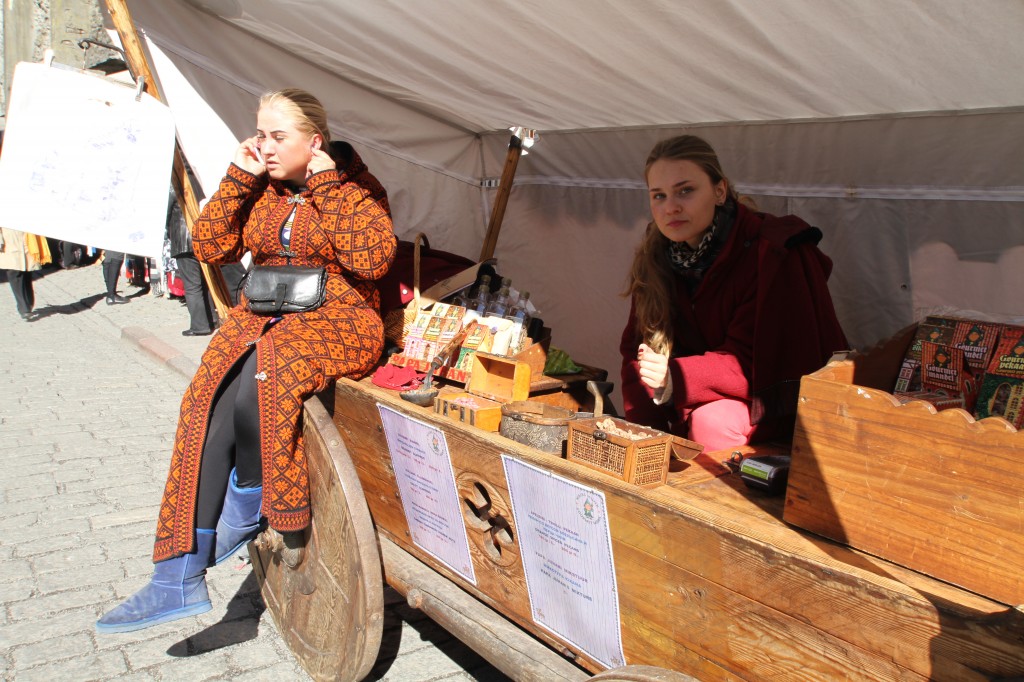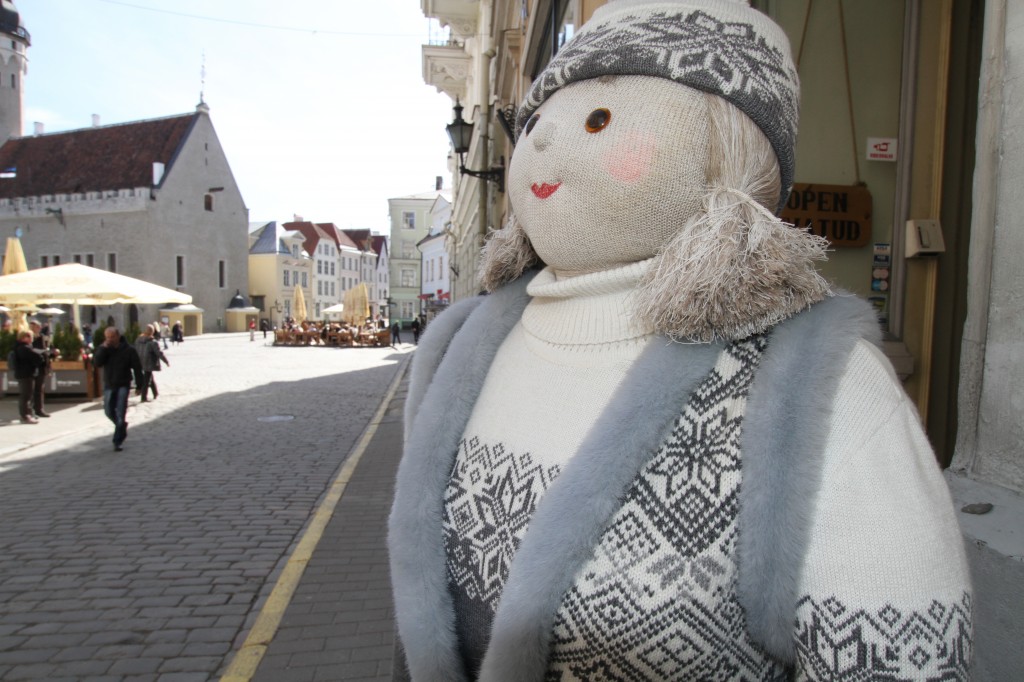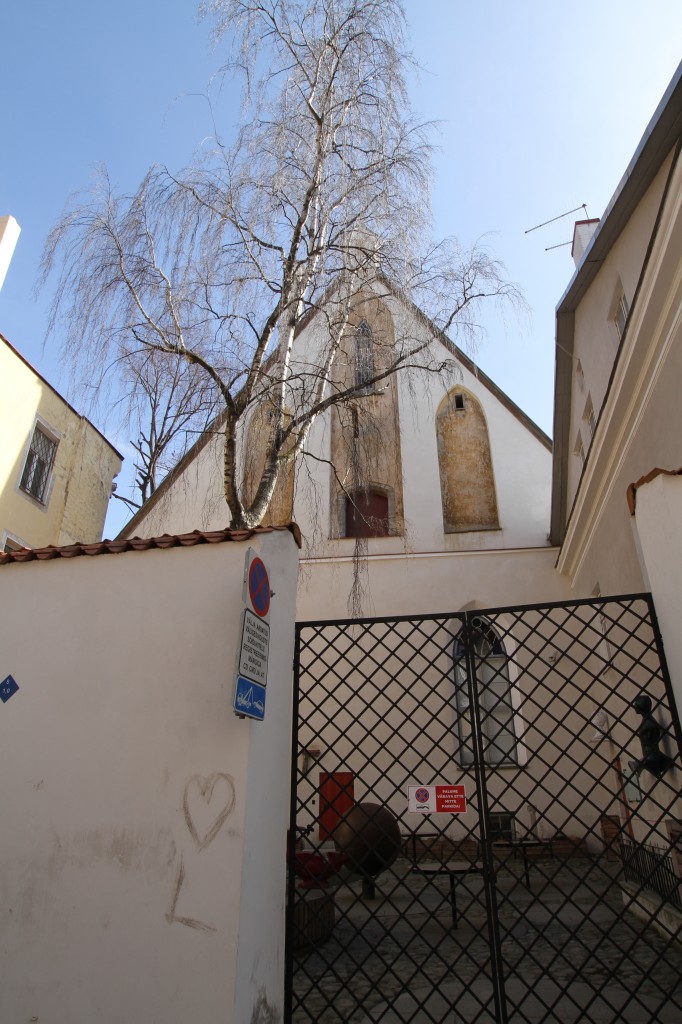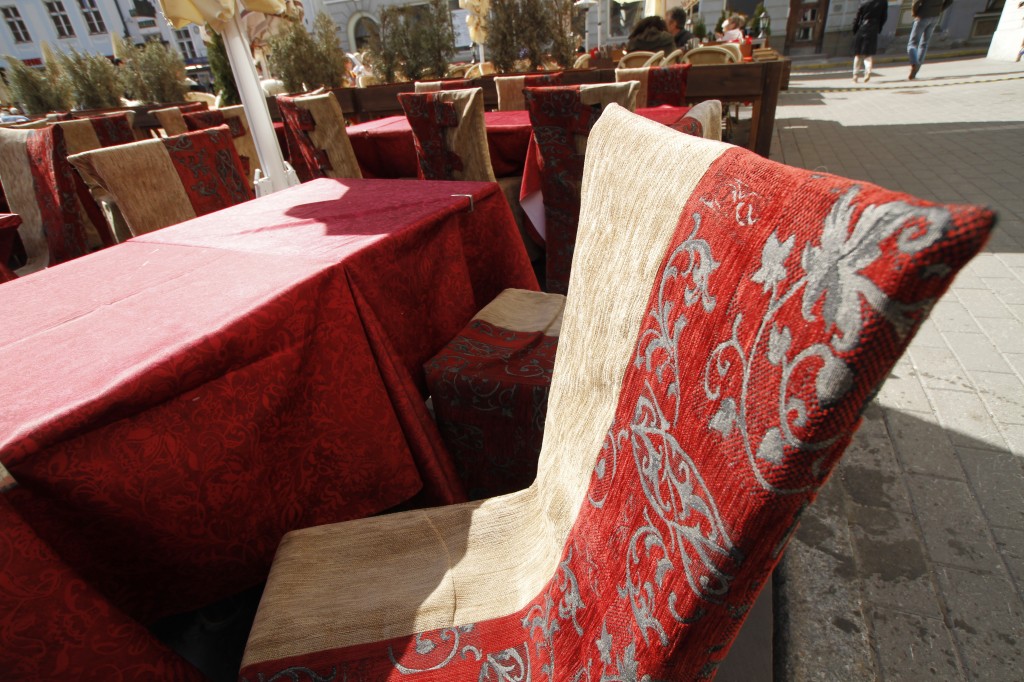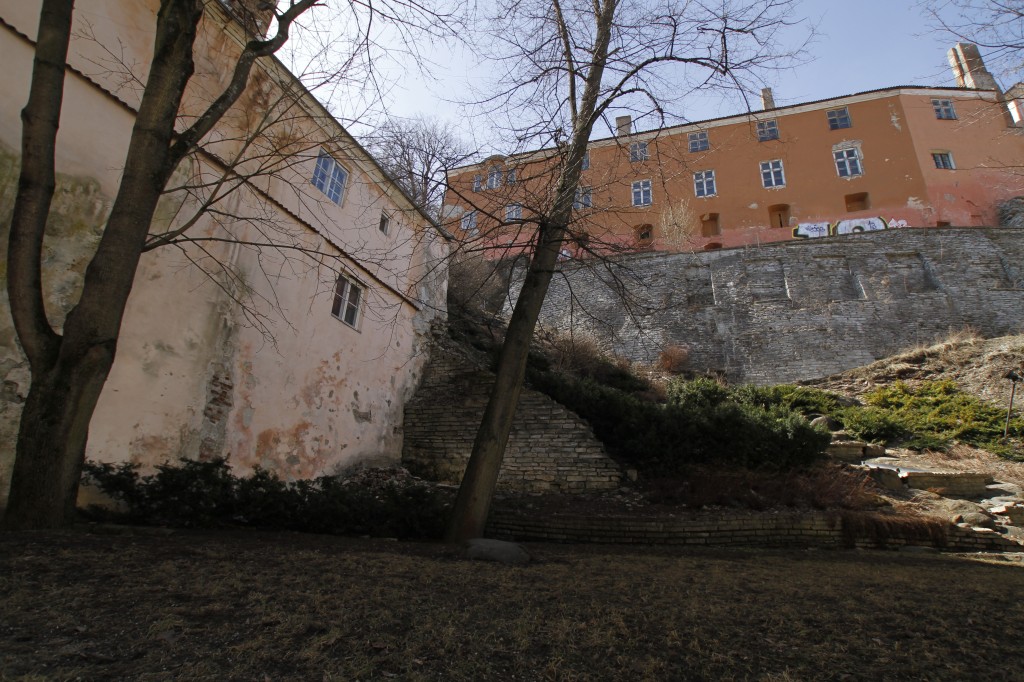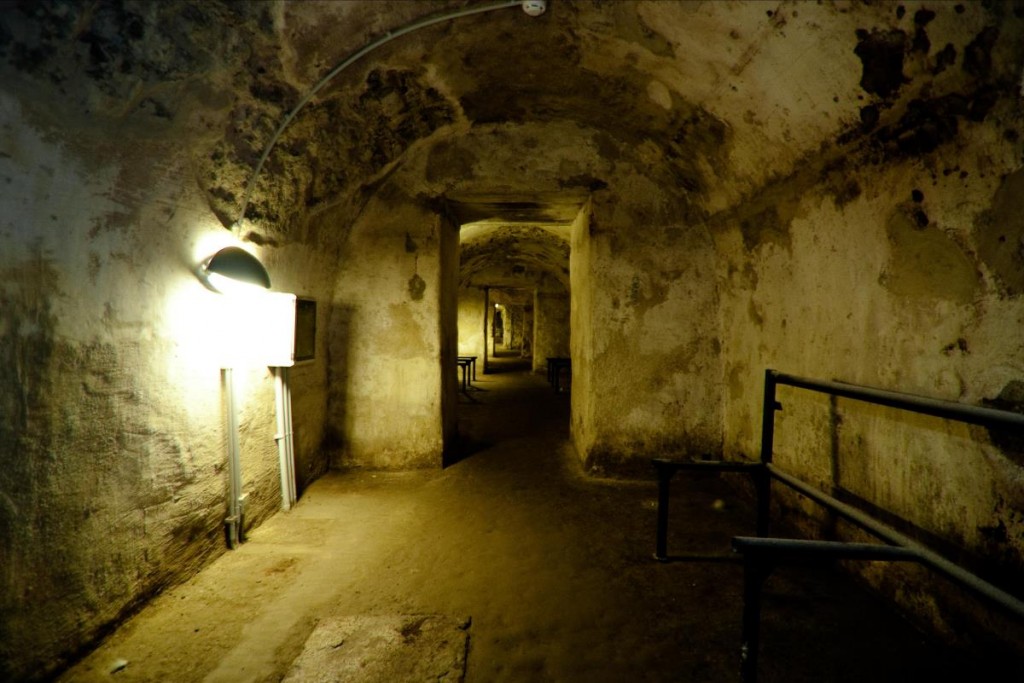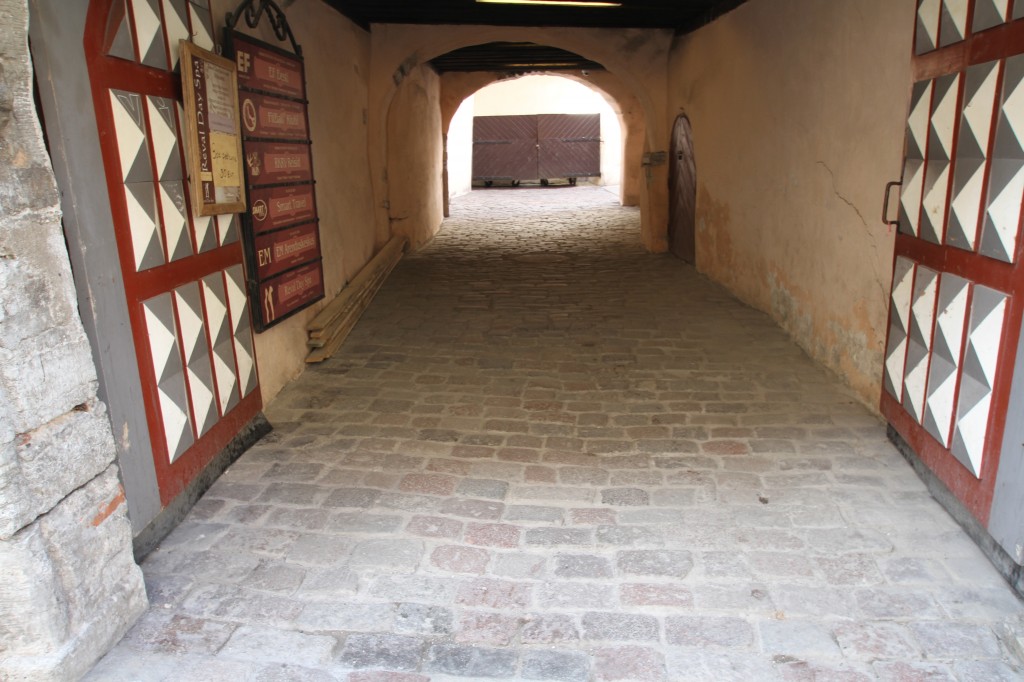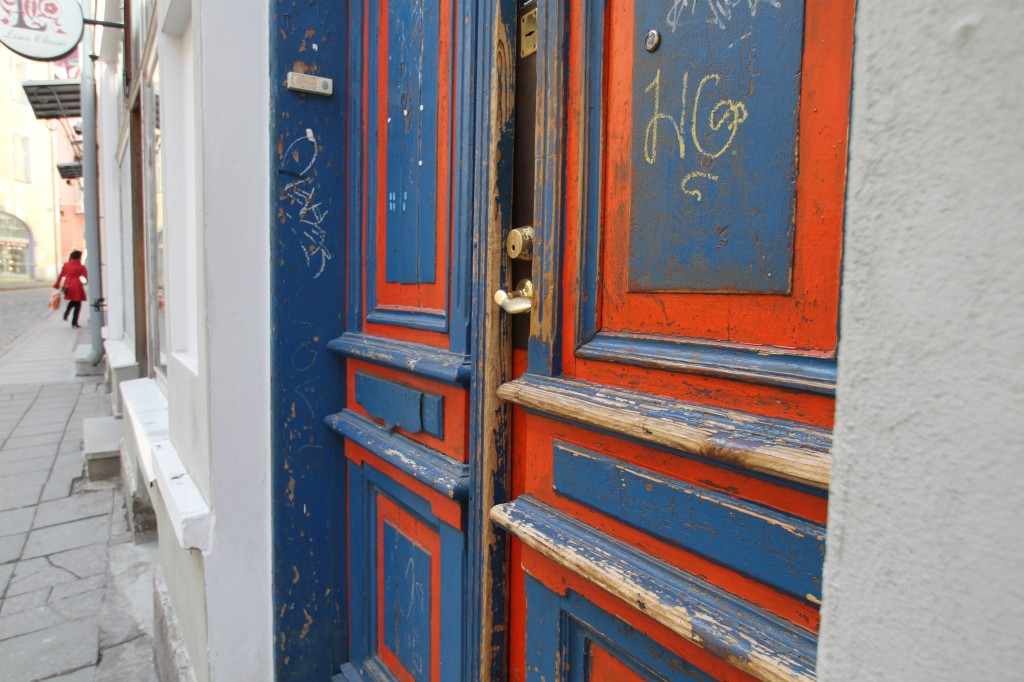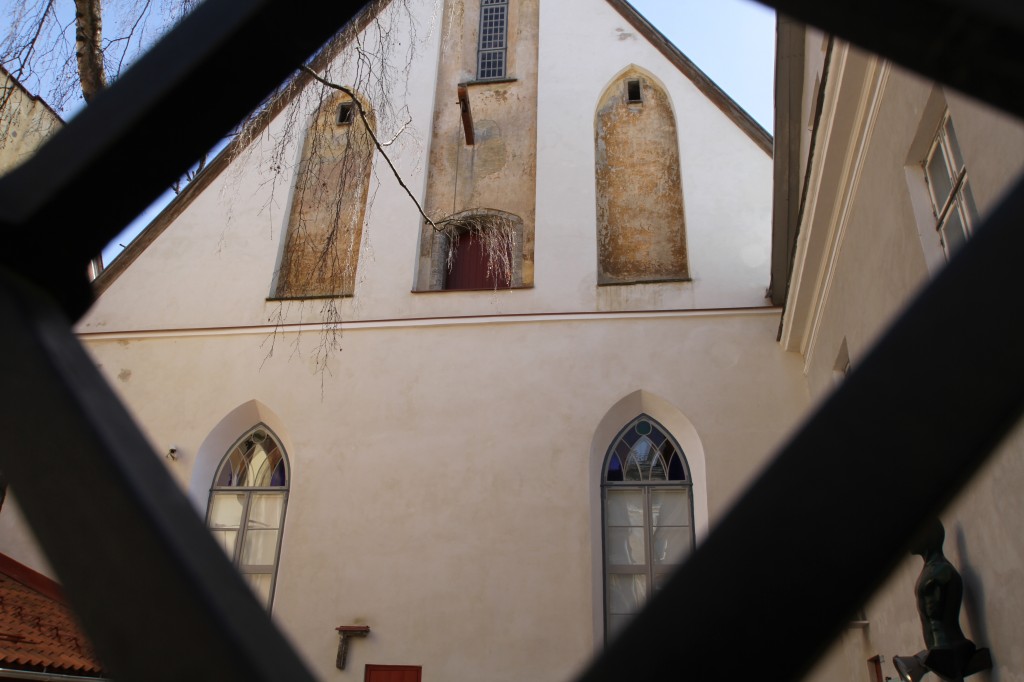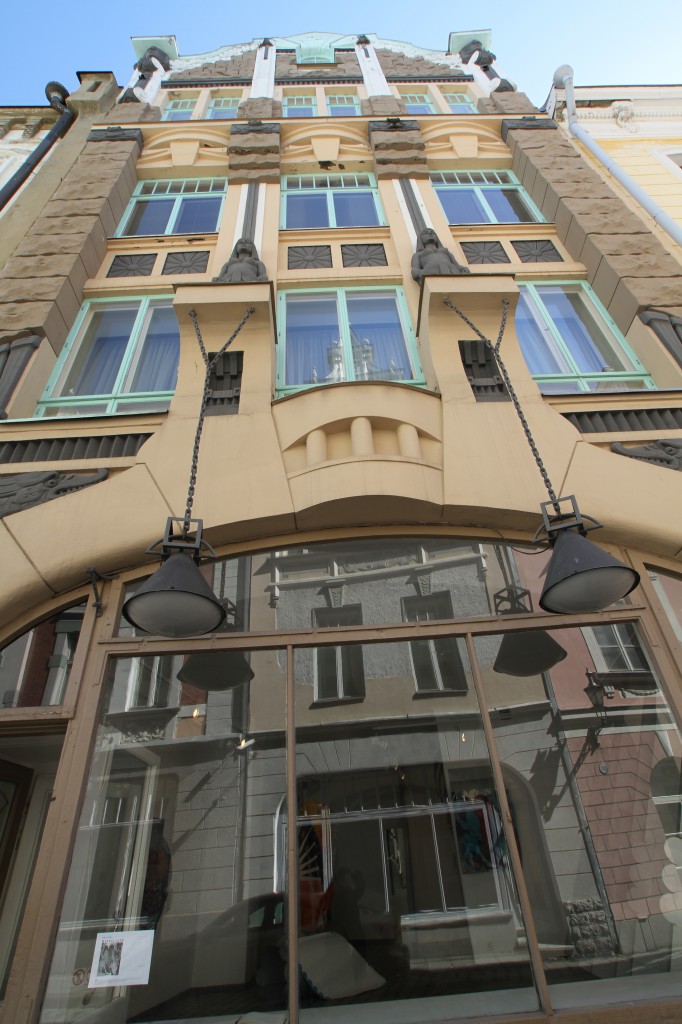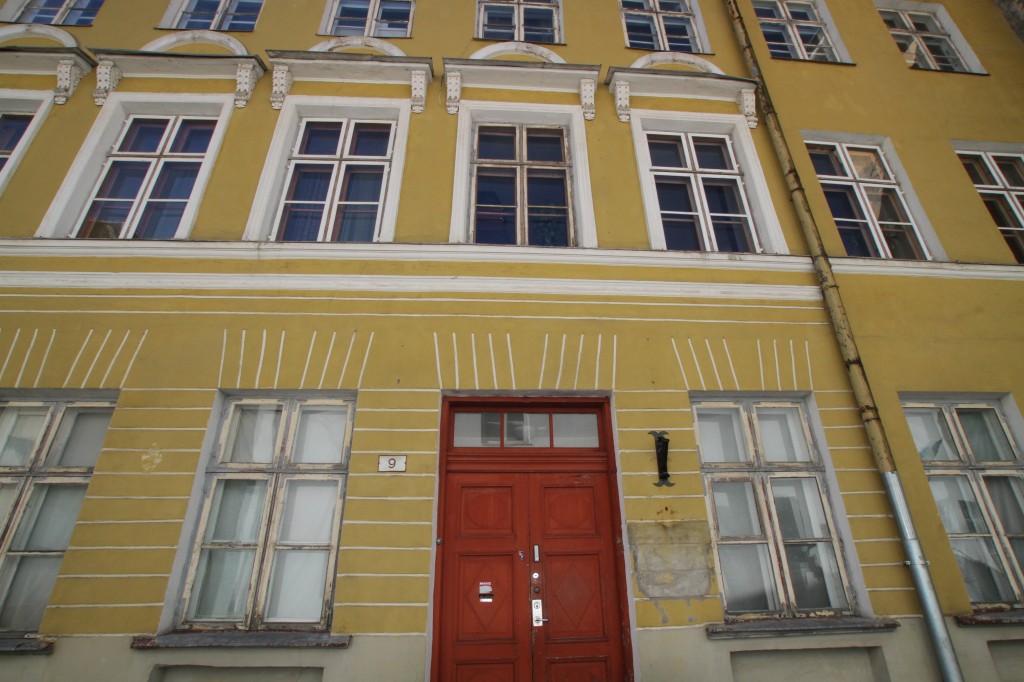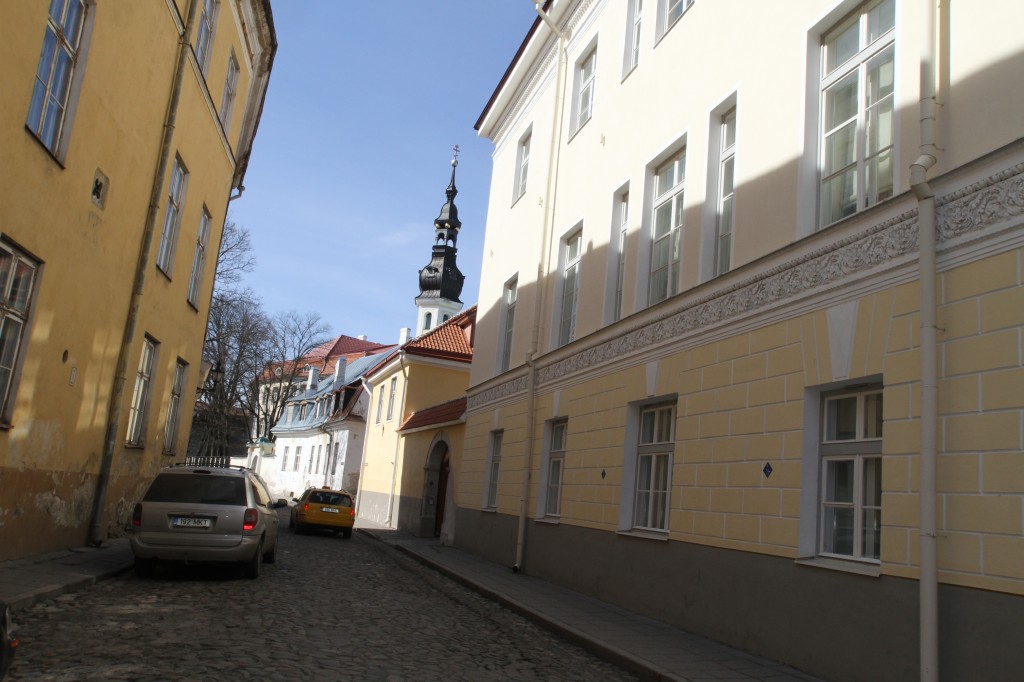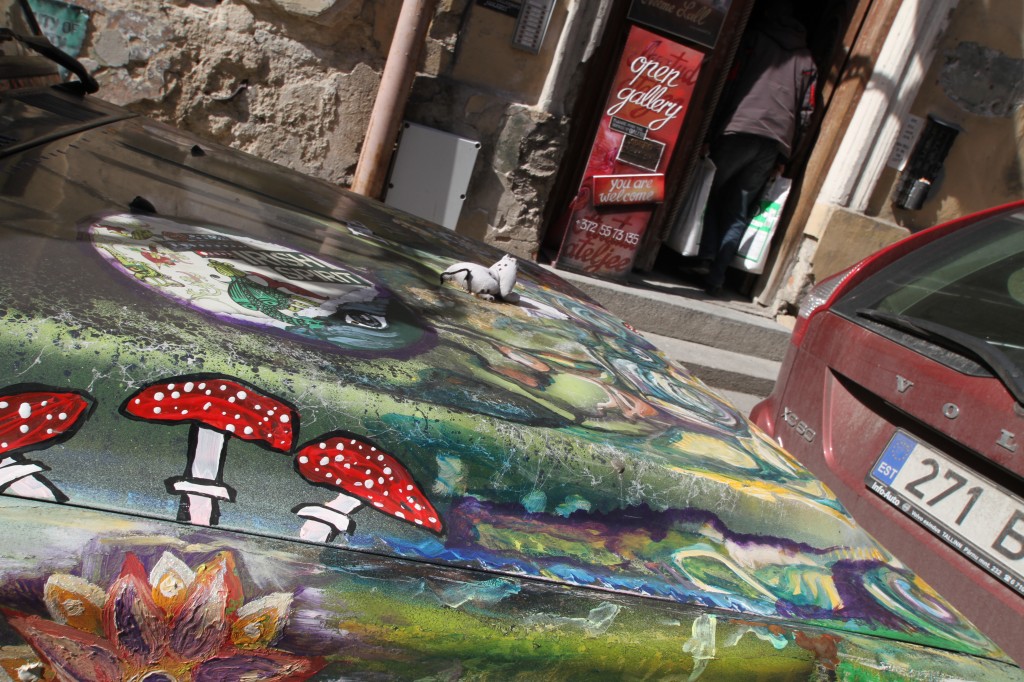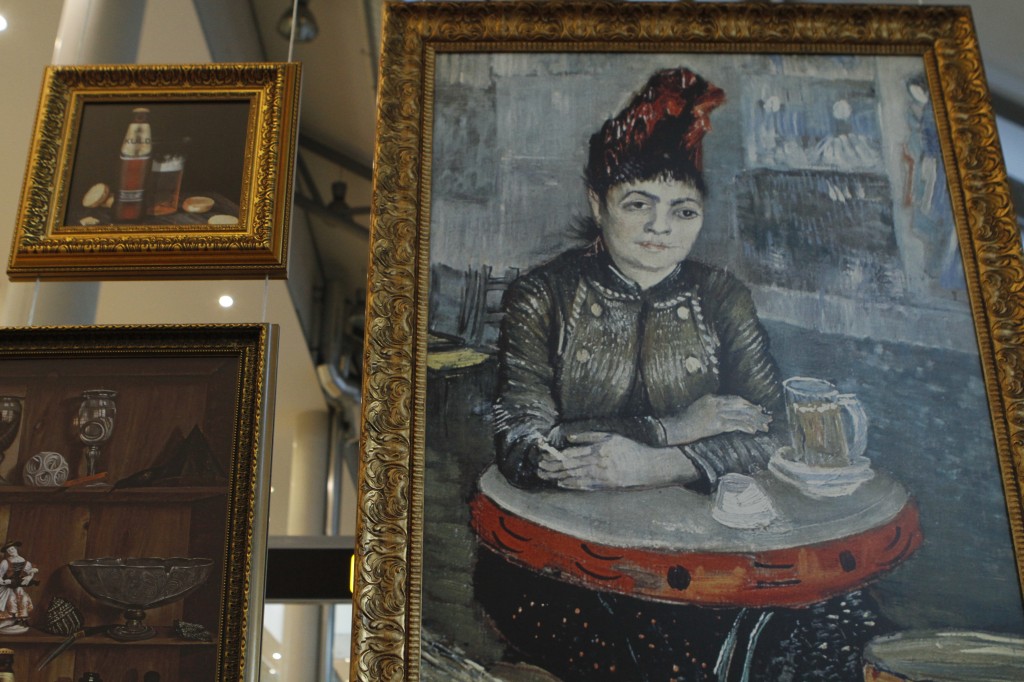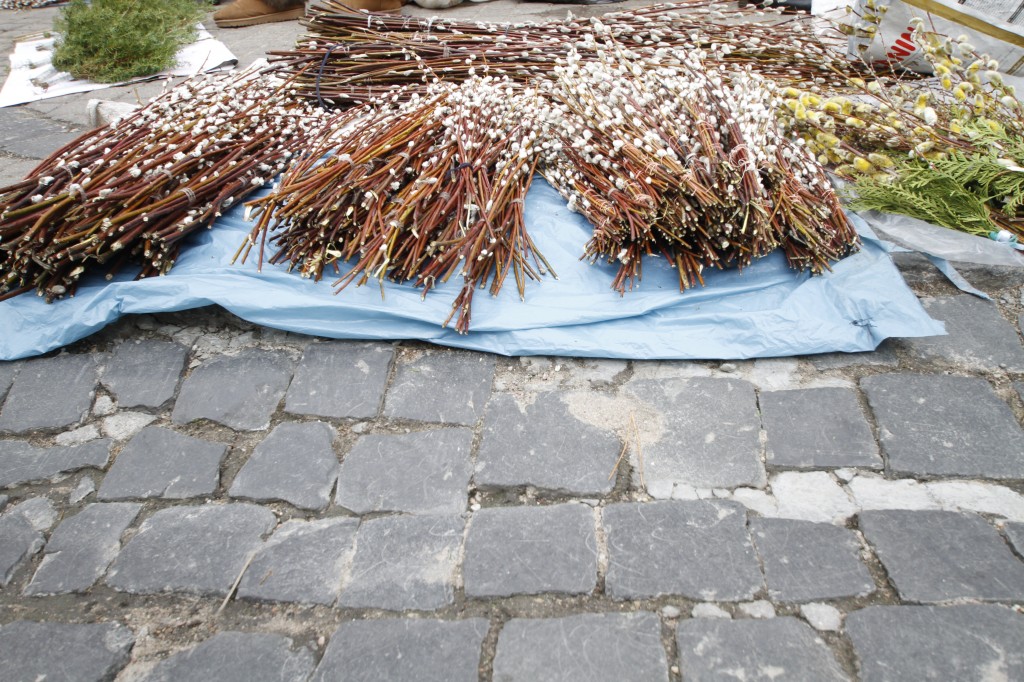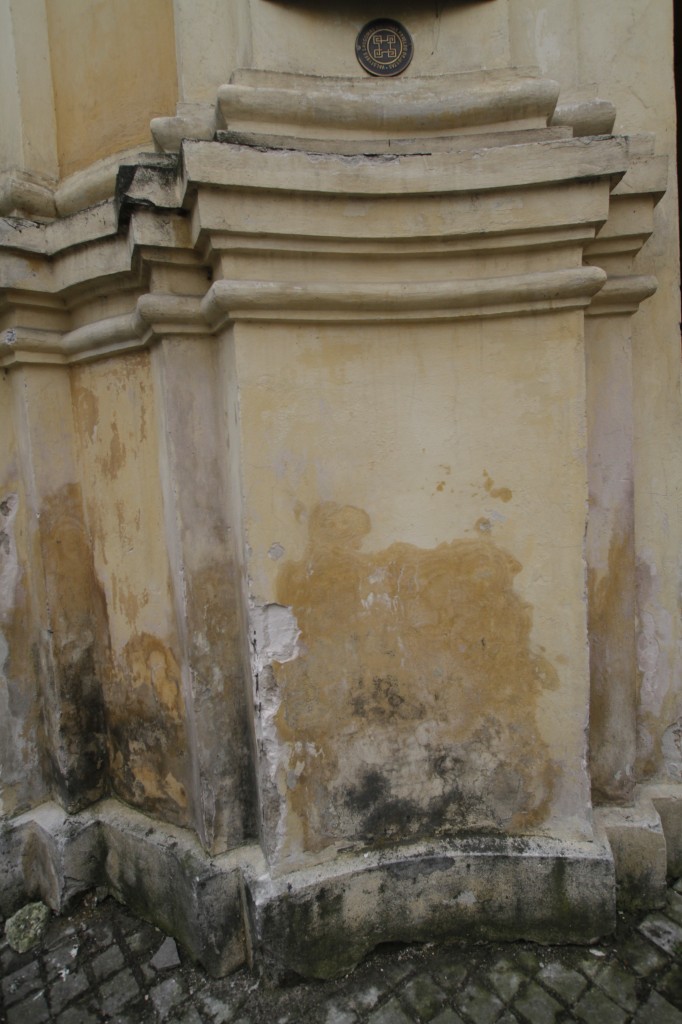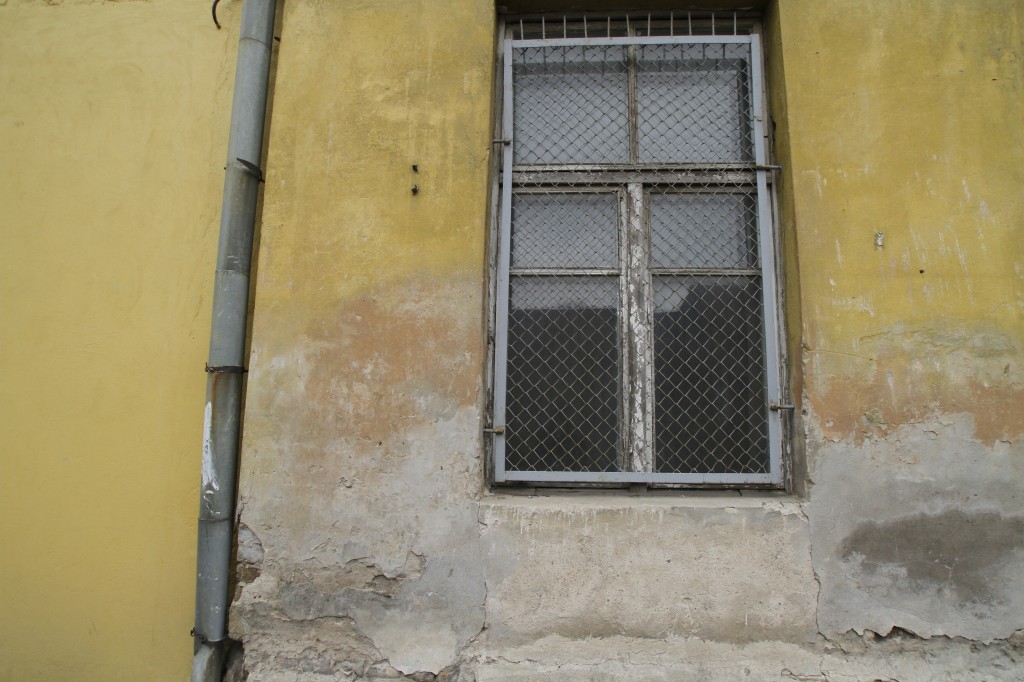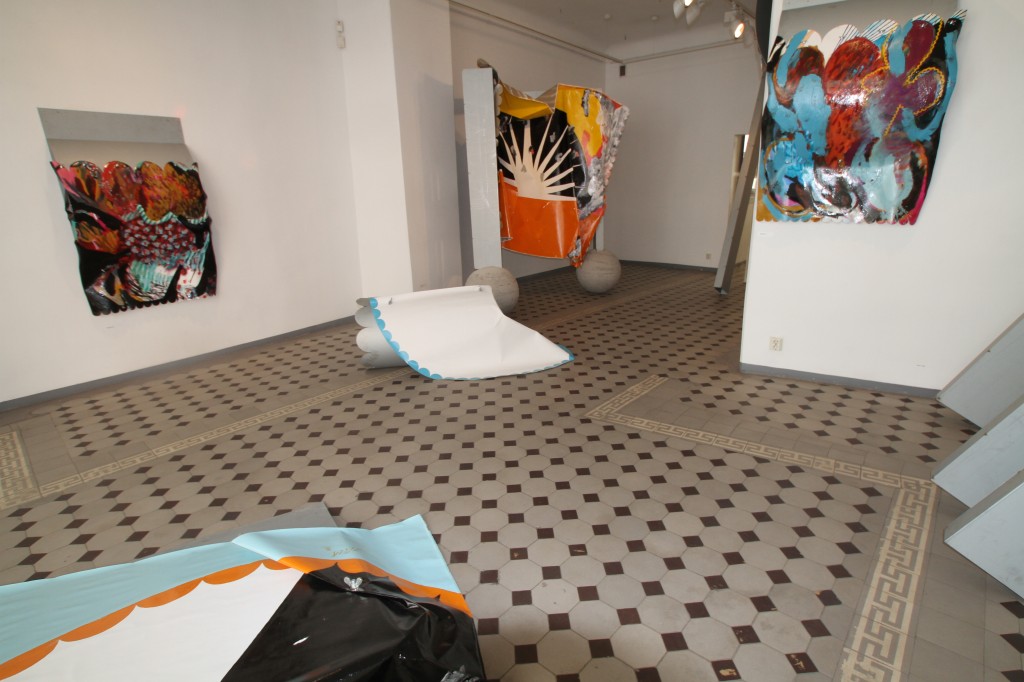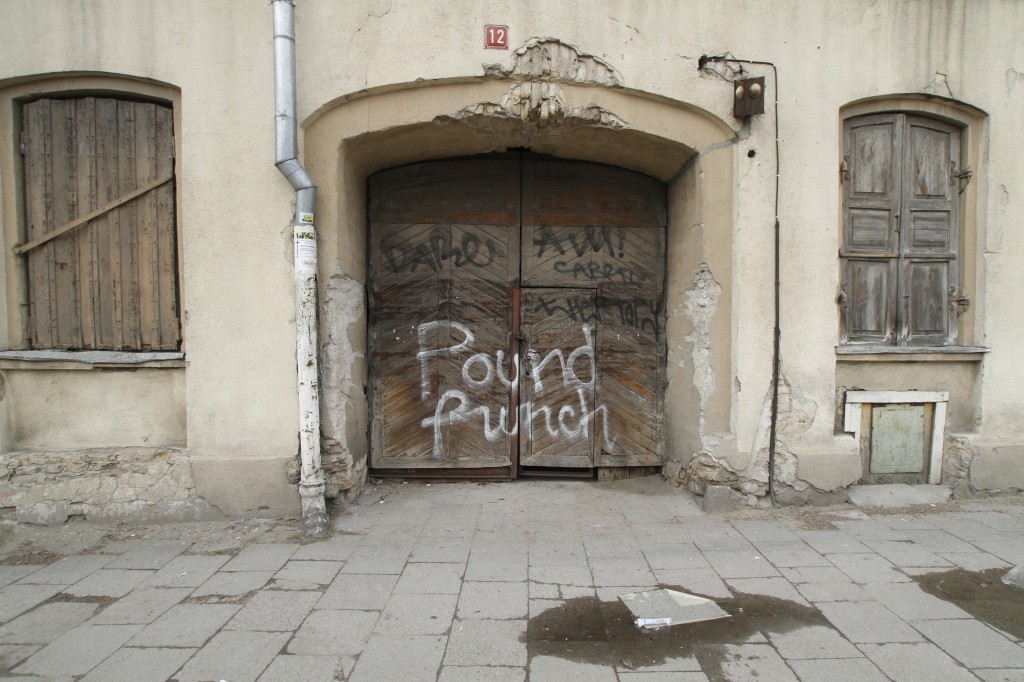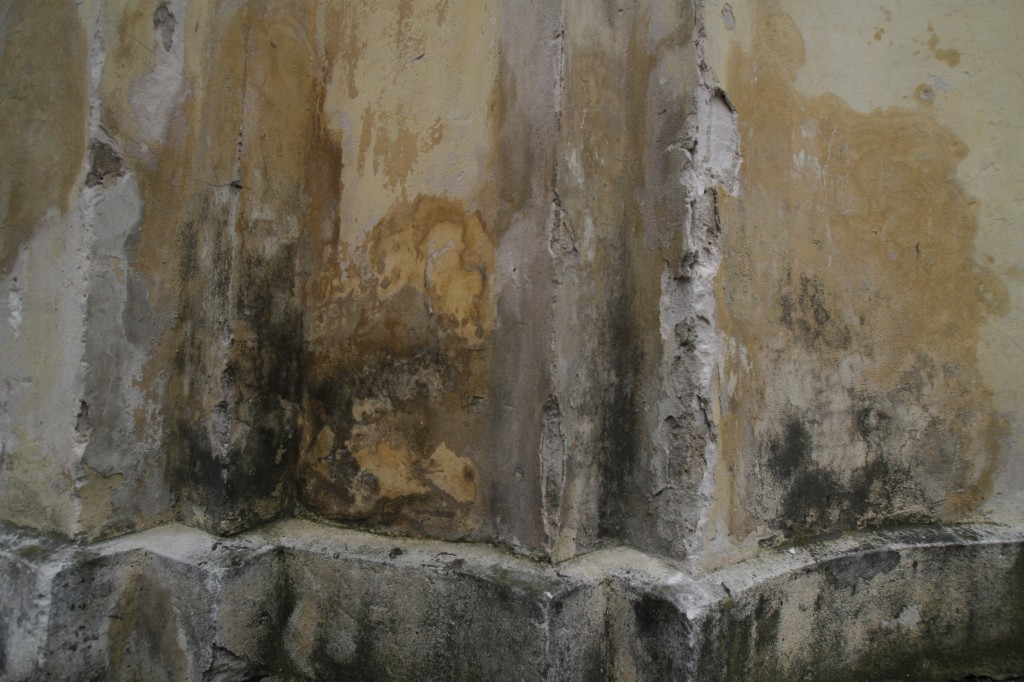Tallinn Estonia. We’ve covered it on We Blog the World before here, here and here, but personally, I had never been. From afar, it sounded like an Eastern European city modeling itself after Prague in order to attract tourists to its borders and yet, after seeing the new Prague (a year and a half ago) and the old Prague (25 years ago), it couldn’t be any further from the truth. Tallinn doesn’t come with overly commercial trimmings, yet it boasts five star hotels, spa experiences and chefs who can compete with the best in Europe.
When I arrived, I did what I always do – set off on foot, with map in pocket and a general direction in my mind, but without a set agenda. Not having an agenda is always one of the best ways to discover a city because then the experiences have a better chance of surprising you rather than you molding your experience into a box, the one that tells you the top five things you must do in Tallinn.

That doesn’t mean I wouldn’t recommend a few “must do’s” such as the Sokos Hotel Viru (see our extensive write up), otherwise known as the KGB Hotel just outside Tallinn’s Old Town. There’s also the forts of which there many entries, from Fat Margaret’s Tower (Great Coastal Gate), which was built in 1511, Kiek in de Kok, the museum of the town’s defenses, the Loewenschede Tower build in the 1370s and the Maiden’s Tower, built around the same time. If you’re into ancient cultures, then you’ll be a giddy child taking in everything from ghost stories to historical relics.
Did you know that the Swedes ruled Estonia from the 1500s to the 1700s? I didn’t before I arrived and yet I don’t get the feeling that much of their heritage remained, at least not in the same way that colonial empires left their footprints in Africa and India as an example.
Not far from the first hotel I stayed at in Tallinn (Telegraaf Hotel, which was once a post office – see our hotel review), lies the town square. Like most European cities, bars and restaurants line its edges and outside tables with yellow umbrellas create an almost summer holiday-like experience even amidst the cool temperatures of Eastern Europe in April. It’s much easier to get away with given the narrow alleys which stem off from the main cobblestone area, loaded with cafes, chocolateries, woolen shops offering hats, gloves and socks, and trinket shops for those who need to go home with a coaster, spoon, glass, flag or porcelain doll that plasters the name of Tallinn upon it.
Here, I took in the Europe I knew best…the one with bistros which would deliver me fabulous dark beers (the one time I appreciate drinking beer, being much more of a wine lover), traditional shops with materials and more materials and of course the others which carry quirky items to remind you of their thousands of years heritage, one which the yanks can’t touch. If I go back in time for a meander, I’d rather it not be solely discovered in a book or a relic I can purchase at a shop however old….I want some mad scientist historian to take me back in time so I can get lost in his facts, figures and stories so deeply that I forget where I am…..What’s magical about Eastern Europe is that you’re more likely to experience this if you randomly seek it out, which btw, won’t take much effort.
Generally people are proud of their heritage and I find this to be more true in Eastern Europe than the West — okay, except for France and England, two nations who still feel they are the cat’s meow of both the ancient and modern world. Germany pretty much gave up that loftiness after Hitler’s atrocities became known. After that, it was about their “quality products” and precision and less about their wanting to rule the world. The French will never give that up and well, the English….that’s a whole other story, a chapter if you will, okay, maybe five….Lest we suggest saving it for another day?
The Estonians don’t have any of that arrogance, but they do maintain their pride. More reserved than the Russians and yes, even the Poles, I found their interactions more conservative if you will, almost Finn-like, but without the structure and need to be so damn precise about their day-to-day world.
In the limited time I did have time to set off and explore on my own, I tried to talk to anyone and everyone I could: 90% of my exchanges were with Finns, one with a Ukrainian, one with a Russian, two with Germans and one with a Brit…..this will give you an idea of where their primary tourism stems from. The money and the ‘interest’ flow is largely still from the Finns who are nearby, have money to spend and are an intellectual bunch who are keen on history, heritage and quirky getaways not too different from their own.
Estonia is a puddle jump for them, making it easy for romantic weekend getaways and longer family holidays in a land not too far away from home. I ran into two Finns who live in a place called Åland, a self-governing archipelago of islands off the coast of Finland where Swedish speakers constitute a majority. The conversation went something like this: So, you’re Finnish says I?
Yes, they say. I’m curious about the Finnish language, I say. He says, well it’s my second language. Huh, I say? He tries to explain as I follow him to a street I want to take photographs of just outside of Tallinn’s Old Town….he says he’ll bring me 80% there with his map in full view while mine lay buried in my pocket, as always.
Swedish is apparently the mother tongue of about 275,000 people in mainland Finland and of about 25,000 people in Swedish-speakers comprise 5.5% of the total Finnish population or about 5.1% without Åland. This Åland place has me intrigued as I think about it (and them) after once again trekking off on my own.
I learn that the Old Town is divided into two sections: Lower Town and Toompea Hill and then later discovered from yet another Finn, not a map, that the the streets which divide these two areas are Pikk Jalg (Long Leg Street) and Luhike Jalg (Short Leg Street). I climbed up the Pikk Jalg by foot, though it was once notorious for carriage traffic heading to and from Toopea. Here I ran into an adorable Estonian artist who wanted to do my portrait while I wanted to shoot him drawing anyone except for me. He marveled at my camera while I marveled at his chalk colors and sturdy canvas which was a quarter of the price I paid for the same sized one in the states. From there, I ventured north, climbed a leg of stairs, passed a few artistic shops and faced one of the most haunted buildings in the city head-on, a tower which was built in 1456 and has many a’ story to go along with it.
I meander my way further north without looking at a map and come face-to-face with another turn of the 15th century church. Suddenly, I have an idea for a shot….I want to lie down on the gray pavement which lay in front of the chapel. Creativity took over and when I’m finally ready for my shot and a local Estonian agreed to take it, for I am alone, I hand him my Canon 7D. He turns the camera upside down and over and eventually makes his way back to the viewfinder, looking at me in dismay, his eyes begging me to show him once again where to push the shutter. I return to the camera and my eager photographer friend, repeat the instructions and then run towards the ancient structure of which would soon be my backdrop. As I do so, a female peasant with no front teeth, wearing a scarf around her head which buried half her face, walks slowly to the middle of the structure and suddenly stops.
I look at my Estonian photographer and he looks back at me. Slowly I walk over to her and ask her if she’d either be part of the shot or would mind moving out of it for two minutes max while we took a photo. My Estonian photographer suggests that a Euro would likely do the trick, however a coin or even two didn’t seem to get her attention.
While the spot had no one standing there for twenty minutes, it was no longer mine for the taking. And so, I continued to move, migrating from cobblestone to cobblestone, square to square, hill to hill (and I climbed several that day), taking photos of weathered buildings, corners of buildings, and historical monuments which I deemed would be important to someone, least of which would be me. You see, I marvel in the brokenness of a city more than I do of its mirrored Western charm. The latter of course is easy to replicate with a little help from government funding and let’s not deny it — a little authentic glamor mixed with quaint cafes and restaurants never hurts to bring Western money into the system. That said, Tallinn has enough charm without the frills to attract any Western Tourist with its history, culture, the loveliness of its people and its Eastern flavored cuisine which, btw, I loved at every stop I made.
While tourists may be thinking of jaunting off to Prague or even Budapest for that matter, they may now want to consider Estonia as an authentic alternative, one which is loaded with heritage and charm, and hasn’t yet been over-ridden by western influence.
From the charm and attention-to-detail outdoor cafes to historical landmarks, there’s a lot to take in during a meander through Tallinn. If you’re into medieval arms, venture over to the Epping Tower, a six-storey tower where you can man-handle replica swords, or the Hellemann Tower for a walk through a 200 meter stretch of the wall that dates back to the 14th century.
The Bastion Tunnels is a quirky tour you can take and I use the word quirky purposely….here, you visit some of the old equipment left over from that era, via a slow moving train ride where you see the tunnel’s past and its possible future into several decades from a current reality.
Old town runs deep despite the fact that the town center is fairly small. There are plenty of galleys, alleys, corner streets, pockets and corners you can explore all of which deliver a delicious cultural and historical past.
Aside from history, culture and alternative art exists in spades…..if only I had more time. From cars, buildings and colored herbs to ceilings, building edges and off-beat art galleries, creative faces and voices shine amidst Tallinn’s walls.
I was told by the local who found me in the alleyway that the structure in and around this doorway dates back 1,600 years or so.
And buildings around it aren’t far off in age…their weathered texture and shades of mustards, grays, whites and variations in between show its face.
There’s another side of Tallinn which the tour books won’t lead you to: the outskirts, where people live. Buildings are not renovated, partially because there isn’t the budget for it and partially because they might choose the structure to maintain its historical untouched self, corners peeling away or not. Not unlike what I was told by a Lithuanian in Vilnius the same week, not only do they not have the money to restore and renovate every building that might be a worthy landmark but they choose not to for historical and authentic reasons. While the Estonians may not have used the same language, there was the juxtaposition of burying the past (and the less than happy Soviet times that went along with that past) and applauding it, to ensure their children and children’s children never forgot.
Truth be told, the best stories a city can tell rarely come from the city center or on the streets where tourists walk…..they always come from the outskirts, the outliers, the outlandish, the out-of-bounders, the misfits. In Tallinn, I didn’t have time to meet with the misfits as I so often do on my trips but I did have a chance to witness some of the architecture in the outskirts.
Its tentacles span wide for the country isn’t that large, so its easy to get to the interesting spots in the east, west and south within an hour or two. As you venture out of town, you see a lot of gray and white-washed buildings, then, leafless Birch trees with spiked outshoots amidst pines the further out we go. There’s a McDonald’s eyesore on the way and I wonder what year it was brought in, as IT lie woven into other shops and eateries alongside a petrol station and a red and white striped smoke stack. There were more smoke stacks as we headed further out of town….and an intersection that read “8 miles to Kesklinn.”
Then a main drag which passes a body of water on our right, white caps brewing despite muted winds….a reminder that we aren’t always in control. In between IT and us lay a gray washed concrete divider which blocked off anything and everything else except a strip of a flat, farming area with saffron yellows as its main reward. The brush overwhelmed as there were few houses and only a few medium sized pines which stood proudly together yet condensely crowded, begging for more space. I learn that the area is the first permanent settlement in Northern Estonia and the fields are nearly 9,000 years old. On the right are stone graves which was part of the first permanent village, hay stacks scattered throughout its valley.
History is abundance inside the city’s walls or within an hour or two’s drive, making it an ideal location for exploring the country.
For more of our general Estonia coverage, check out our Estonia Travel section for more. All photo credits Renee Blodgett.

Renee Blodgett is the founder of We Blog the World. The site combines the magic of an online culture and travel magazine with a global blog network and has contributors from every continent in the world. Having lived in 10 countries and explored nearly 80, she is an avid traveler, and a lover, observer and participant in cultural diversity.
She is also the CEO and founder of Magic Sauce Media, a new media services consultancy focused on viral marketing, social media, branding, events and PR. For over 20 years, she has helped companies from 12 countries get traction in the market. Known for her global and organic approach to product and corporate launches, Renee practices what she pitches and as an active user of social media, she helps clients navigate digital waters from around the world. Renee has been blogging for over 16 years and regularly writes on her personal blog Down the Avenue, Huffington Post, BlogHer, We Blog the World and other sites. She was ranked #12 Social Media Influencer by Forbes Magazine and is listed as a new media influencer and game changer on various sites and books on the new media revolution. In 2013, she was listed as the 6th most influential woman in social media by Forbes Magazine on a Top 20 List.
Her passion for art, storytelling and photography led to the launch of Magic Sauce Photography, which is a visual extension of her writing, the result of which has led to producing six photo books: Galapagos Islands, London, South Africa, Rome, Urbanization and Ecuador.
Renee is also the co-founder of Traveling Geeks, an initiative that brings entrepreneurs, thought leaders, bloggers, creators, curators and influencers to other countries to share and learn from peers, governments, corporations, and the general public in order to educate, share, evaluate, and promote innovative technologies.

